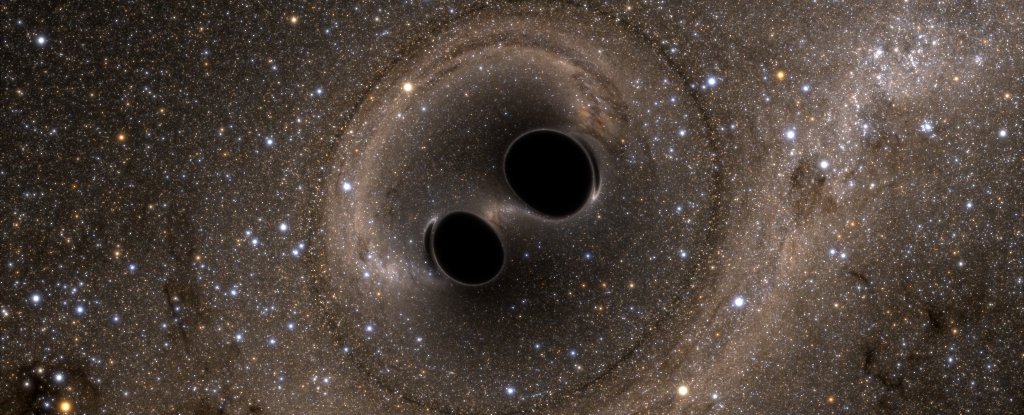Products You May Like
Gravitational wave astronomy has just given us another amazing gift: the first observational confirmation of one of Stephen Hawking‘s predictions about black holes.
An analysis of the very first gravitational wave detection made back in 2015, GW150914, has confirmed Hawking’s area theorem. It states that, under classical physics, the area of the event horizon of a black hole can only grow larger – never smaller.
The work gives us a new tool for probing these mysterious objects, and testing the limits of our understanding of the Universe.
“It is possible that there’s a zoo of different compact objects, and while some of them are the black holes that follow Einstein and Hawking’s laws, others may be slightly different beasts,” said astrophysicist Maximiliano Isi of MIT’s Kavli Institute for Astrophysics and Space Research.
“So, it’s not like you do this test once and it’s over. You do this once, and it’s the beginning.”
Hawking first proposed his theorem back in 1971. It predicted that the surface area of the event horizon of a black hole should never decrease, but only increase.
The event horizon is not the black hole itself, but the radius at which even light speed in a vacuum is insufficient to achieve escape velocity from the gravitational field generated by the black hole singularity. It’s proportional to the mass of the black hole; since black holes can only gain mass, under general relativity, the event horizon should only be able to grow.
(This increase-only model is also curiously similar to another theory, the second law of thermodynamics. It states that entropy – the progression from order to disorder in the Universe – can only increase. Black holes also have entropy ascribed to them, and it’s directly proportional to their event horizon surface area.)
Mathematically, the area theorem checks out, but it’s been observationally difficult to confirm – mainly because black holes are extremely difficult to observe directly, since they emit no detectable radiation. But then, we detected the gravitational ripples propagating through space-time of a collision between two of these enigmatic objects.
This was GW150914, and the brief bloop of the collision recorded by the LIGO interferometer changed everything. It was the first direct detection of not one black hole, but two. They came together and formed one larger black hole.
This black hole then faintly rung, like a struck bell. In 2019, Isi and his colleagues worked out how to detect the signal of this ringdown. Now they’ve decoded it, breaking it down to calculate the mass and spin of the final black hole.
They also performed a new analysis of the merger signal to calculate the mass and spin of the two pre-merger black holes. Since mass and spin are related to the area of the event horizon, this allowed them to calculate the event horizons of all three objects.
If the event horizon could shrink in size, then the event horizon of the final merged black hole should be smaller than those of the two black holes that created it. According to their calculations, the two smaller black holes had a total event horizon area of 235,000 square kilometers (91,000 square miles). The final black hole had an area of 367,000 square kilometers.
“The data show with overwhelming confidence that the horizon area increased after the merger, and that the area law is satisfied with very high probability,” Isi said.
“It was a relief that our result does agree with the paradigm that we expect, and does confirm our understanding of these complicated black hole mergers.”
At least in the short term. Under quantum mechanics – which does not play nicely with classical physics – Hawking later predicted that, over very long timescales, black holes should lose mass in the form of a type of black-body radiation we now call Hawking radiation. So it’s still possible that the event horizon of a black hole could decrease in area, eventually.
That will obviously need to be examined more closely in the future. In the meantime, the work of Isi and his team have given us a new toolset for probing other gravitational wave observations, in the hope of gaining even more insights into black holes and the physics of the Universe.
“It’s encouraging that we can think in new, creative ways about gravitational-wave data, and reach questions we thought we couldn’t before,” Isi said.
“We can keep teasing out pieces of information that speak directly to the pillars of what we think we understand. One day, this data may reveal something we didn’t expect.”
The research has been published in Physical Review Letters.
